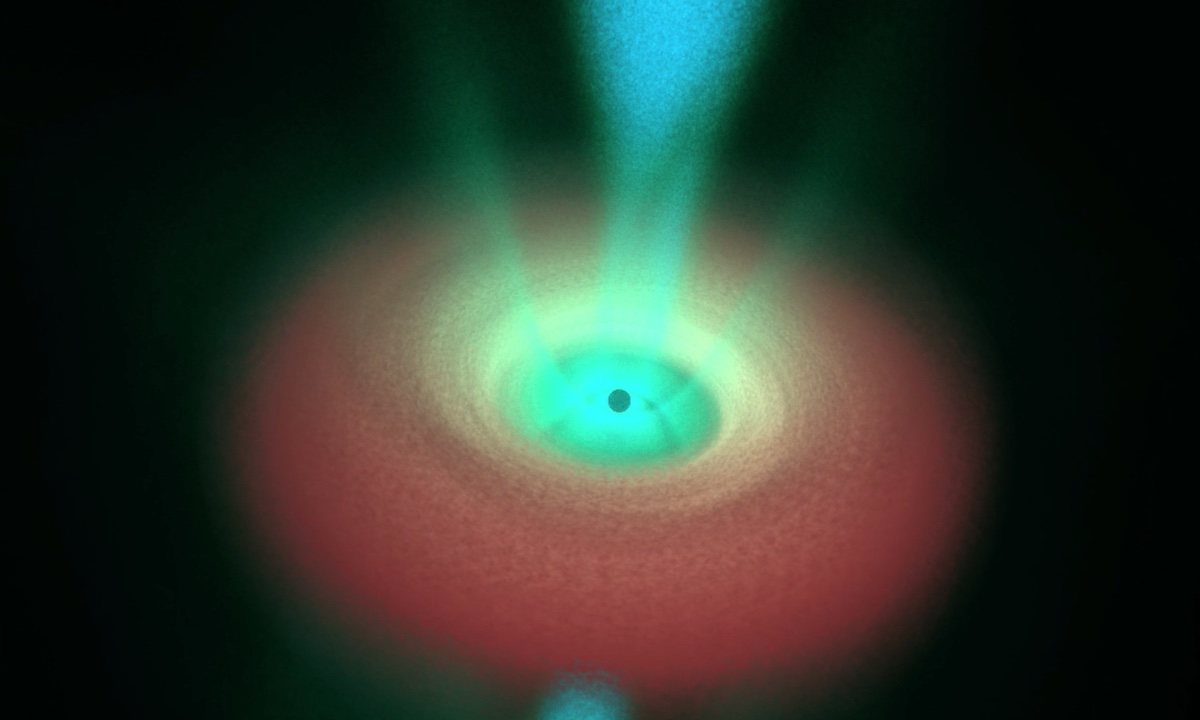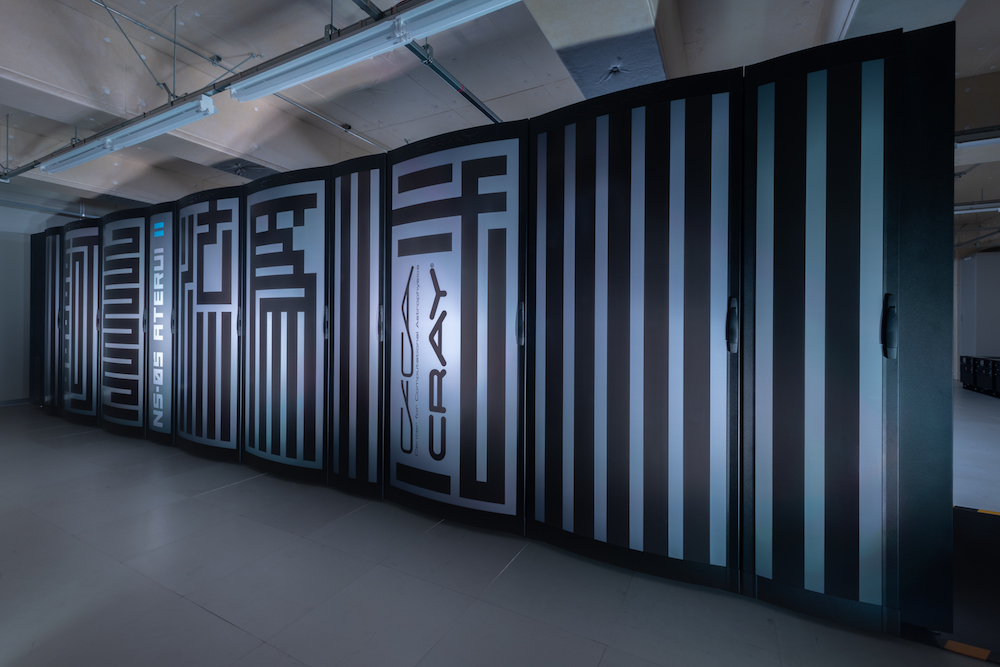Overview
Researchers at University of Tsukuba conducted innovative simulations of spinning black holes grounded in general relativity, which clarified that the ultraluminous accretion disk (i.e., gaseous spiral surrounding a black hole) exhibits a precessional motion driven by the black hole's spin. This finding underscores the potential of this spin to be the primary driver of the periodic fluctuations in luminosity observed within these ultraluminous accretion disks.
This study was published as Asahina and Ohsuga “General relativistic radiation-MHD simulations of Precessing Tilted Super-Eddington Disks,” in The Astrophysical Journal on September 17, 2024. The research was carried out using computational resources such as the Fugaku supercomputer at RIKEN and the dedicated astronomy supercomputer ATERUI Ⅱ at the National Astronomical Observatory of Japan. For more information, please refer to the Press Release from the University of Tsukuba. (October 17, 2024)

Download: [PNG (1.1 MB)]
Publication Information
Title: "General relativistic radiation-MHD simulations of Precessing Tilted Super-Eddington Disks"
Authors: Y. Asahina and K. Ohsuga
Journal: The Astrophysical Journal
DOI: 10.3847/1538-4357/ad6cd9
Supercomputer used in this research
For the Use of Contents in This Website
- Contents are to be used with a clear indication of its copyright (e.g. (c) NAOJ.)
- If you would like to use the contents found in this web site, please follow Terms of Use of the Website of NAOJ.
Related Links
University of Tsukuba: "Influence of a Black Hole’s Spin: First Evidence of Precession in Ultraluminous Accretion Disks"

